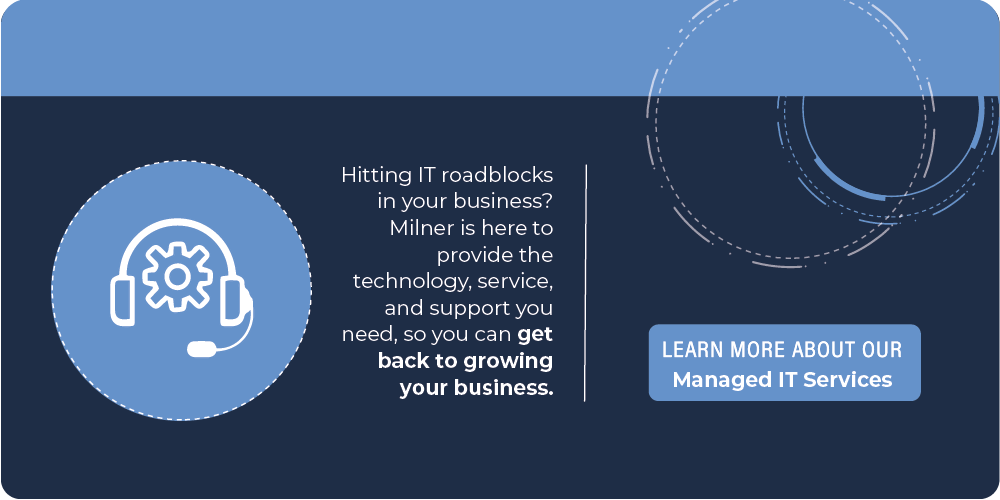.jpg?sfvrsn=c52d489f_4)
Aug 18, 2021
Over the past year, our views about the workplace have shifted significantly. With about half of the U.S. workforce still working remotely as of this June 2021, office technology trends have emerged that are making it possible to imagine a new way to collaborate and work, without physical boundaries.
More than ever before, organizations must find ways to leverage technology to be best positioned to operate no matter what disruptions will occur. From the normalization of a hybrid workforce to a greater reliance on automation, these digital workplace shifts will define how we work, collaborate, and operate for the years to come.
In the midst of this digital transformation, organizations now appreciate more than ever that there are no boundaries around what constitutes "the office," and while the entire workforce will not be remote, employees expect to work within a more hybrid work model. According to a recent survey by Gensler, the majority of the workforce would like to split time between remote and in-office work. Employees now expect to have more schedule and geographic flexibility and expect a digital workplace strategy to aim toward a digital-centered infrastructure—with office space that allows for social distancing and increased capabilities for mobile working and virtual collaboration.
IT services, more than ever, most deliver a technology infrastructure that enables clients to be supported anywhere, with digital workplace technologies that serve as a hub for collaboration and productivity. This means that more than ever before, employees collaborate and share knowledge in real-time online with digital workplace tools for daily work functions like virtual meetings and instant file sharing. Along with the adoption of more digital technology solutions, comes the need for reliable and secure remote access, a more distributed cloud infrastructure, and accessible remote IT support.
Additionally, now that swinging by an office or grabbing a conference room will be less of a norm, internal communications and collaboration tools like Microsoft Teams, Slack and Sharepoint will be crucial to the employee experience and employee engagement. More and more, teams must rely on these tools to collaborate, stay connected with colleagues, and even integrate into workplace culture.
In fact, as of Q2 2021, Microsoft Teams has already grown to over 145 million users, nearly doubling in numbers since the same time last year, while Slack brought in $902 million in revenue over a single 12-month period, with 12 million daily active users as of May 2021.
While overemphasis on building artificial intelligence (AI)-powered tools is expected to slow, the adoption of more digital workplace applications means a greater need for SaaS business applications to "play nice" and seamlessly share data with one another. To avoid needless manual hours of translating data from one application to another, automation tools that update, read, and report data instantly are crucial to running a business efficiently, with a special emphasis on capable APIs that allow tools to integrate into a working digital workplace platform.
Returning to Slack as an example, one reason for their success can be found in this metric: currently, about 4,000 apps are able to run alongside the SaaS application.
The overwhelming prevalence of digital workplace adoption and reliance on cloud-based services also requires cybersecurity approaches to be more scalable and flexible than ever. In their report, Top Strategic Technology Trends for 2021, Gartner researchers explain the need for "location independence" from a more sophisticated cybersecurity infrastructure, or cybersecurity mesh, going forward.
“As organizations accelerate digital business, security must keep pace with the rapid change. Cybersecurity mesh enables a security model that retains the plasticity necessary to operate in the current conditions and offers security without hindering growth for the company.”
As a need for more complex and agile cybersecurity protection emerges, more and more organizations are looking for managed IT security services, in addition to more traditional services like remote tech support.
Business leaders today are faced with more challenges than ever before. Aligning business objectives with digital workplace priorities is imperative to delivering seamless customer service and a positive employee experience. With the rise of hybrid work environments and the advancement of more sophisticated IT tools to meet these goals, comes the need for a dependable, experienced managed IT services partner.
Milner provides a wide array of managed IT services designed for today's—and scalable for tomorrow's—digital workplace. To find out how Milner can help you build and manage a digital workplace infrastructure that will allow your employees to thrive no matter where they work, request a consultation with our managed services experts today.
